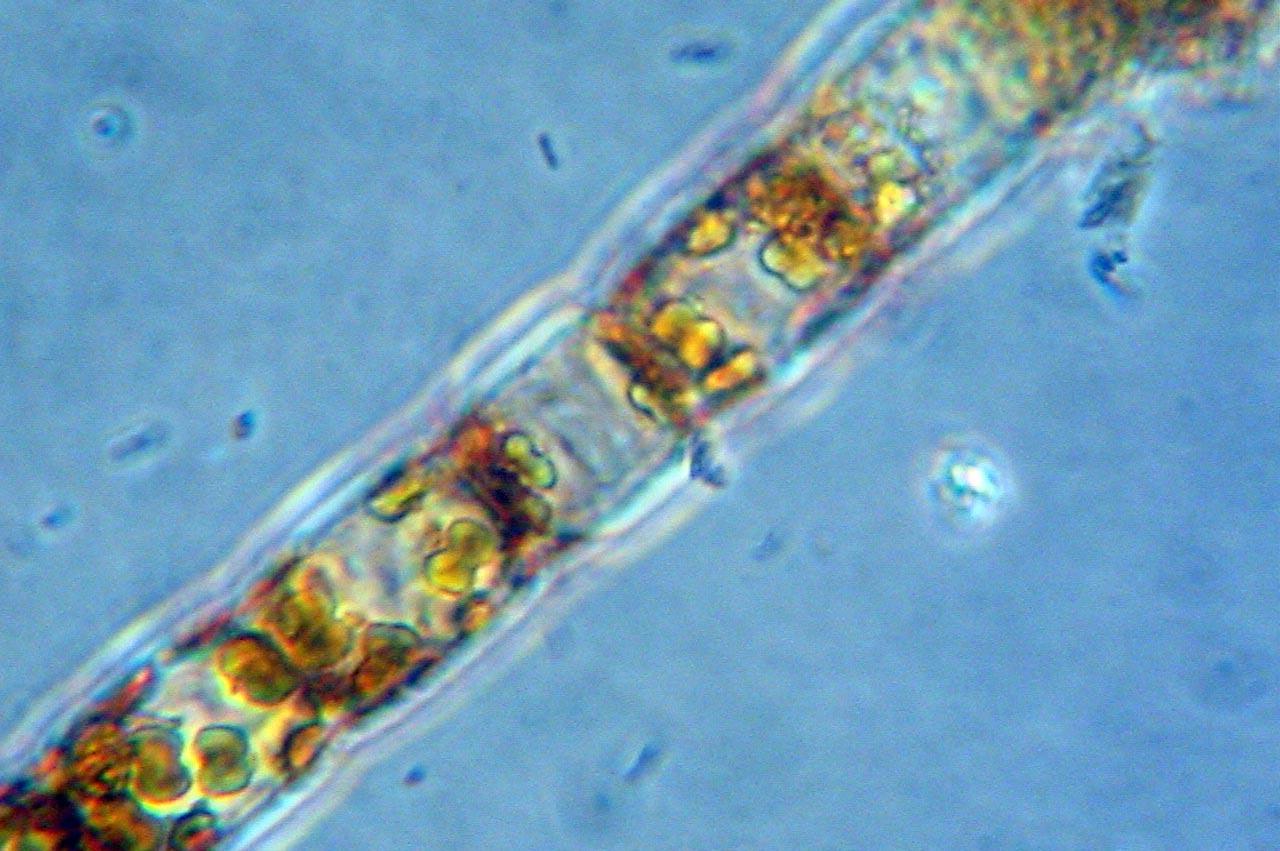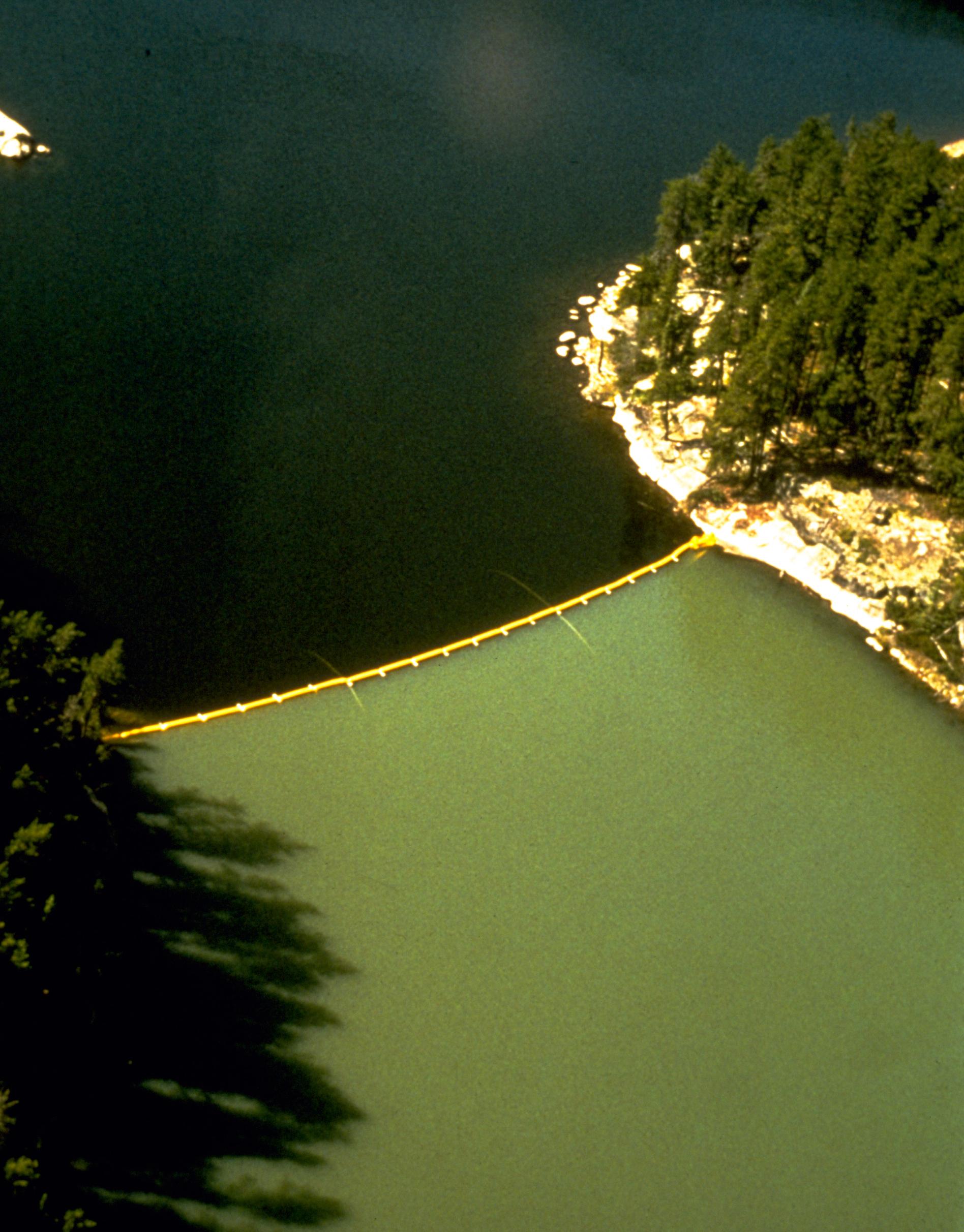From the archives: Algal blooms in Lake Winnipeg
Posted: June 26, 2025
This article was in the first-ever edition of LWF’s newsletter, published in November 2005, where Dr. Lyle Lockhart explained the science that guides our work to combat algal blooms on Lake Winnipeg.
What we really need is a way to limit all the algae without giving the blue-greens an advantage.
Each summer we see blooms of algae in Lake Winnipeg. Blooms of these tiny plants happen in many lakes worldwide and have been investigated many times. Usually the cause turns out to be ourselves, partly our numbers and partly the things we do. When we want to get rid of things, we often put them into our lakes. Lake Winnipeg has probably always had occasional blooms of algae but they are more extensive now. They occur more frequently, and they are composed of fewer kinds of algae. Unfortunately some of the things we put into the lake include the very things that algae eat. Generally algae are good for lakes. They have that wonderful, green pigment, chlorophyll, which allows them to capture sunlight and transform it into chemical energy. That process ultimately sustains all life including our own. But too much of a good thing can be bad. Too much algae is bad for a lake. We have been feeding the lake and its algae too much and now we shall have to cut back.
Pediastrum simplex Photo: Hedy Kling
Live algae release oxygen into the water. When the algae die in the fall they sink to the bottom where bacteria decompose them. That decomposition consumes oxygen. During winter, the lake can't take up oxygen very well from the air because of the ice and so decomposition of a large mass of algae can reduce the level of oxygen in the water. Then the fish and other animals have to move elsewhere or die. There are thousands of kinds of algae. We can consider them to be of three general classes, green algae, blue-green algae and diatoms. When they have plenty of sunlight and the right foods they can all grow spectacularly. Lake Winnipeg gets lots of sunlight and we have been giving it the foods algae need; they have taken full advantage of it. If we want to control them, about the only thing we can do is deprive them of something they need. Starve them!
Experience with other lakes tells us that the two elements that can control algae are nitrogen and phosphorus. Most algae need to get their nitrogen and phosphorus in biologically available forms. However, the blue-green algae, are like legume plants because they can take in nitrogen gas and transform it into the forms of nitrogen they need. There is plenty of nitrogen around because about 80% of the air is nitrogen. Consequently we can't control the growth of blue-green algae by starving them for nitrogen. They just make the nitrogen compounds they need and continue to grow in spite of us. The green algae and diatoms can't use nitrogen gas from the air and so we could control them by starving them for nitrogen. But do we want to do that? Algae of all kinds, but especially the green algae and the diatoms, are eaten by tiny animals that are just barely visible to the naked eye. These animals are eaten by bigger ones and so on up to the fish and even to the fishermen. If we stopped all the algae, then we would stop the rest of the food chain too. What we really need is a way to limit all the algae without giving the blue-greens an advantage.
Aphanizominon flos aquae
Photo: Hedy Kling
Anabaena lemmermanii
Photo: Hedy Kling

Stephanodiscus binderanus
Photo: Hedy Kling

That's where phosphorus comes in. All living things need phosphorus. Algae need it to transform their chemical energy, to build cell membranes and to make their DNA. The question of how to control algal blooms has been nagging us for many years. In the 1970s an important experiment was done at a lake in northwestern Ontario. Scientists there were trying to understand whether algal blooms in a lake could be caused by nitrogen or phosphorus. They found a lake shaped like an hourglass and built a barrier across the constriction in the middle to separate it into two halves. Then they added carbon and nitrogen to one half and carbon, nitrogen and phosphorus to the other half. In a short time the half that received the phosphorus produced a massive bloom of blue-green algae but the half that got no phosphorus did not. The phosphorus made the difference.
That experiment in northwestern Ontario is a bit like what has happened to Lake Winnipeg and many other lakes over the past few decades. More and more nitrogen and phosphorus are going into the lake and we are seeing bigger and more frequent algal blooms of blue-green algae. There is much we don't know about Lake Winnipeg because it is so big and so difficult to work on; too little research has been done on it.
Algal growth on lake with added phosphorus. Photo: John Shearer
But the physiological requirements of the algae are known. The algae forming the blooms in Lake Winnipeg are blue-greens and
our best chance of controlling them is to take away something they need but can't make for themselves, namely phosphorus. If we take away their nitrogen, we will limit the typical green algae and diatoms in the lake and the blue-green species will have a big advantage just as we now see each summer. In general, the amount of phosphorus regulates the amount of algae and the nitrogen or, more accurately, the ratio of nitrogen to phosphorus and other elements, regulates the kinds of algae.
The South Basin of Lake Winnipeg usually look pretty muddy. That muddy look comes partly from soil particles carried into the lake by rivers and partly from the bottom as a result of mixing by wave action. The particles in the water block the penetration of sunlight. Algae need light as much as they need food.
The North Basin has clearer water because many of the particles from the Red River settle out in the South Basin. The water becomes
clearer as it makes its way north. The North Basin is also deeper and so the bottom is less likely to be stirred up by waves. The Saskatchewan River used to supply the North Basin with more particles, but the dam at Grand Rapids has reduced that supply because the particles now settle out in Cedar Lake. This sets the stage for blooms in the North Basin. The rivers are delivering more nitrogen and phosphorus than ever because of greater use of chemical fertilizers, more people and livestock and more extensive drainage networks designed to move the water to the lake quickly.
Since the 1970s, scientists have been telling us inputs of phosphorus to Lake Winnipeg are too high.
In view of the contributions of nitrogen and phosphorus from rivers and streams, we have to find ways to manage these supplies at the level of the watersheds that supply the rivers. The benefits of reducing inputs of phosphorus are clear for limiting the growth of blue-green algae. To protect the rivers themselves, however, it is not clear yet whether reducing inputs of nitrogen will be required or to what degree. There are indications that nitrogen affects algae in the streams and rivers, especially the kinds of algae we often see attached to rocks and other fixed structures.
Since the 1970s, scientists have been telling us inputs of phosphorus to Lake Winnipeg are too high. However, their warnings have never resulted in the regulations necessary to reduce the supply. Similar warnings were given about 30 years ago regarding Lake Erie. The supply of phosphorus to Lake Erie was reduced from about 28,000 tonnes per year to less than half of that. The problem with excess algae out in the open water disappeared. That is not to say that all the problems have disappeared from Lake Erie but the problem we have here in Lake Winnipeg was controlled.
There is still much to learn but the experience from the science and from other lakes is definitive. Our phosphorus levels are too high and we need not wait for all the research results before taking steps to reduce inputs. An interim target to reduce inputs to the levels of the 1970s has been advanced by the government of Manitoba. While that target is unlikely to be enough, it is a good start in the right direction.
Now comes the tough part for those of us who live in the watershed; we have to find ways to meet and then to exceed that target.
by Dr. Lyle Lockhart
Acknowledgements:
Several people who have studied the issue of
algal blooms read early drafts of this article and
made helpful suggestions to improve its
accuracy. Thanks to Alexandra Bourne,
Patricia Chambers, Murray Charlton,
Stephanie Guildford, Bob Hecky, Hedy Kling,
Alex Salki, Dave Schindler and Karen Scott.
> learn more about the link between algal blooms and phosphorus